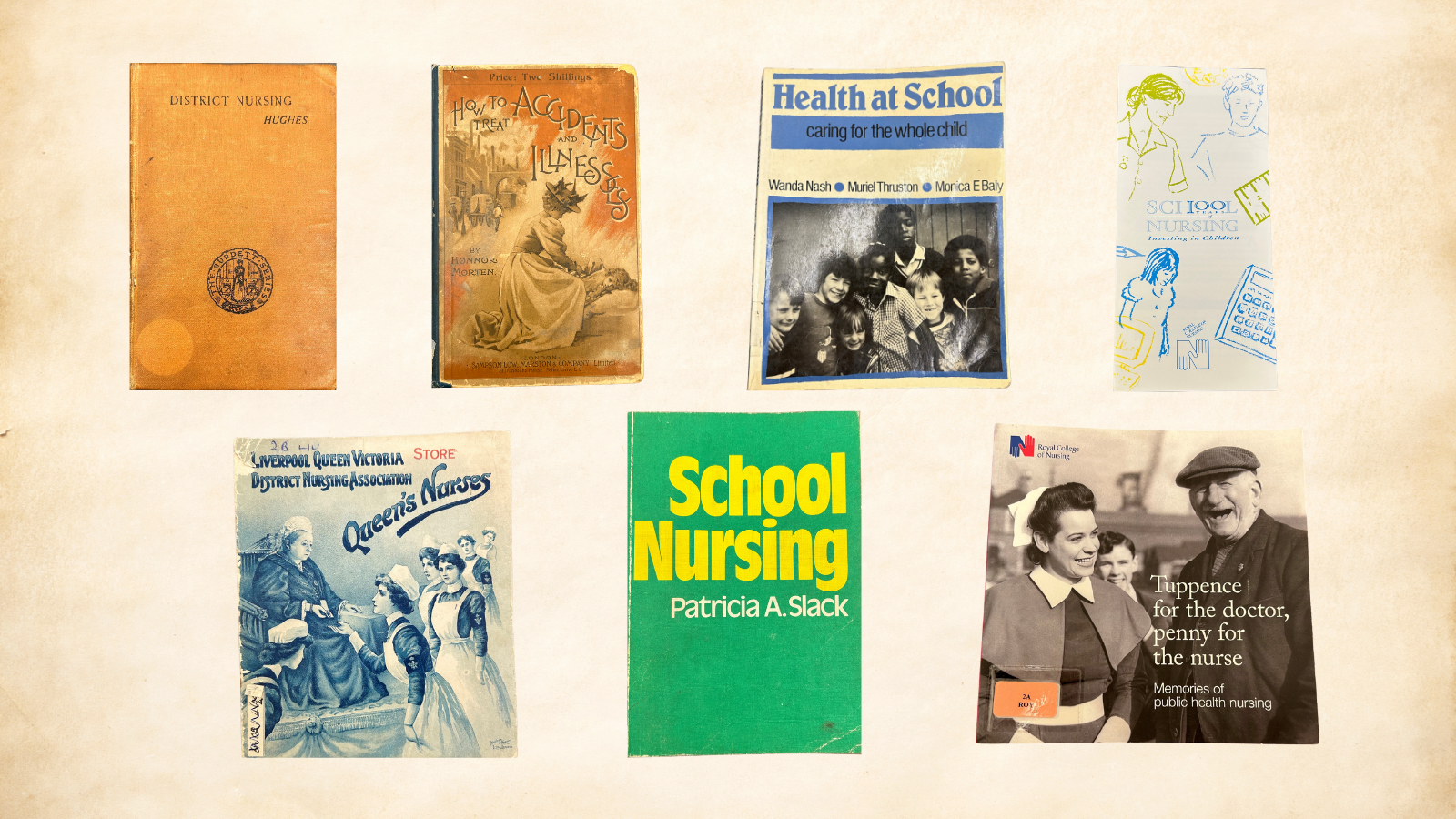News
New spotlight display: ‘More Than Nitty Nora: Achievements in School Nursing’
You can view the display, showcasing the history and achievements of school nurses, on the lower ground floor of the Library and Museum now.

Connect with us:
There’s a new spotlight display in our London HQ, titled ‘More Than Nitty Nora: Achievements in School Nursing’. The exhibition draws on the RCN’s historical print collection to highlight the importance of school nurses, showcasing key moments in the profession’s history and promoting its achievements.
It was nurses who first recognised the importance of looking after children’s health in schools. While the government did not formally create a school nursing service until 1907, Queen’s District Nurses had been visiting pupils since 1892. They boosted class attendance by treating cuts, sores, headaches and other minor ailments that had previously resulted in a large number of absences. Throughout the 20th century, the role of the school nurse expanded to include leading life-saving vaccination programmes, teaching children good hygiene and healthy eating, and tackling head-lice infestations.
However, today, fewer and fewer school nurses are recruited. Since 2009, there has been a 33% decline in the number of school nurses across England, although this figure doesn’t tell the whole story. In some local authority areas, school nurses are no longer recruited at all. Yet school nursing remains extremely important to children’s welfare, and there are ongoing campaigns calling for a nurse in every school to redress this issue.
By tracing the history of the school nursing profession and its positive impact on children’s health and education, the display seeks to reaffirm why the profession is still vitally important today.
If you want to see the display for yourself, you can find it on the lower ground floor of the Library and Museum in London.











